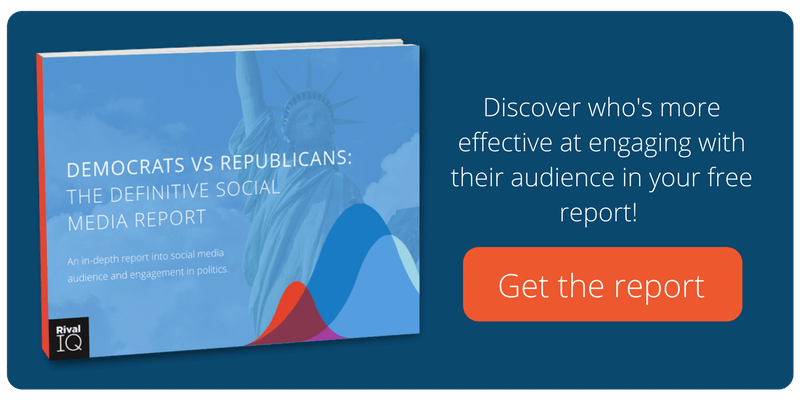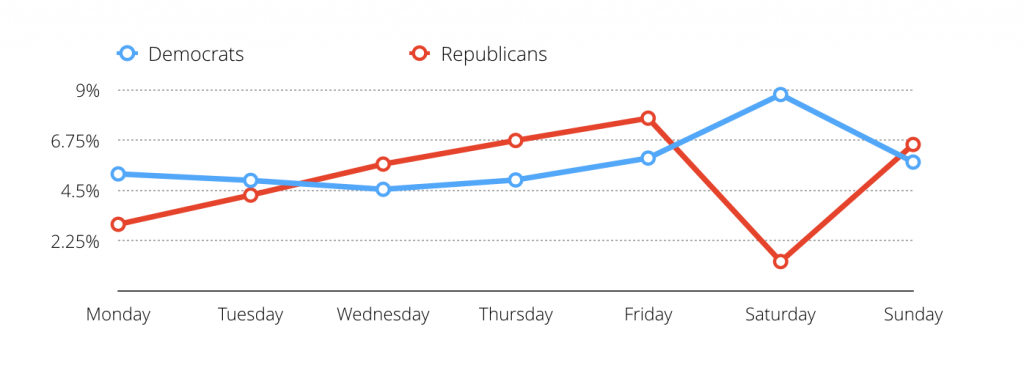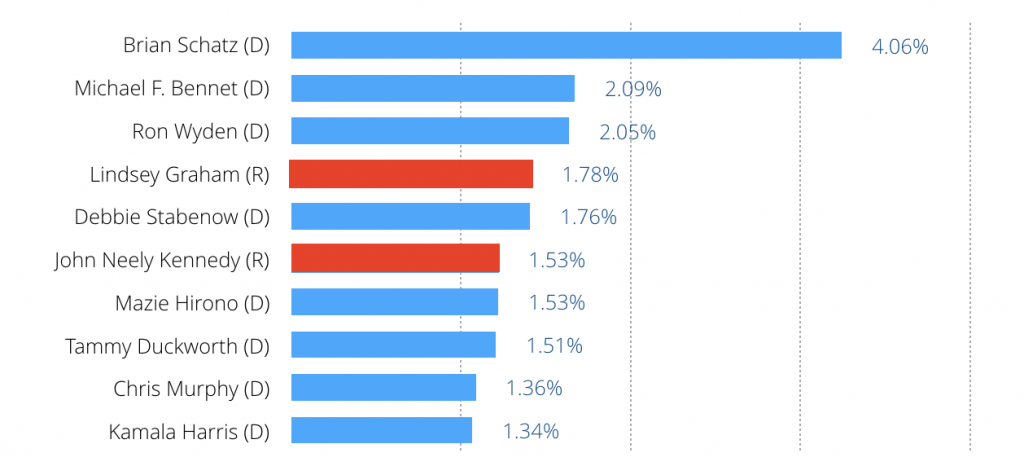With trust in the press at an all-time low, social media has become an important tool in the modern politician’s communications playbook. Platforms like Twitter give politicians the ability to speak directly with their constituents without the context and analysis applied by the media. President Trump’s surprise Presidential win is often attributed to his large Twitter following and ability to cut through the press and speak straight to his base.
Looking Forward
With the 2018 midterms on the horizon, congressional politicians should be seeking to develop smart social media strategies that will help them engage on a one-to-one basis with their constituents. The groundwork for that should be taking place right now, with politicians building their audience, diversifying channels, crafting concise messaging and using analytics to understand how they can cut through the social media noise.
The Political Report
At Rival IQ, we built our software to help digital marketers not only analyze, interpret and improve their organization’s social media presence, but also enable them to compare their own metrics to all the competitors in their landscape. So we thought we’d take this technology and use it to see how Senate Democrats and Republicans are harnessing the power of social media.
We’ve developed an in-depth report that sees Democrats and Republicans go head-to-head based on their cross-channel metrics as well as specific platforms audience and engagement. You can find the methodology for this report at the bottom of this blog.
This blog covers some of the highlights of our report, but you can download it in its entirety here.
The full report covers:
- The top ten senators by audience and engagement on each platform
- Top performing posts from both sides of the aisle on each platform
- Engagement rates by post type and day
- Analysis on top hashtags used by both parties and average engagement per hashtag
Your sneak peak at what’s inside
Cross-Channel Metrics and Analysis
Cross-Channel Audience Total, as of March 1, 2017

Average engagement rate per post, per channel
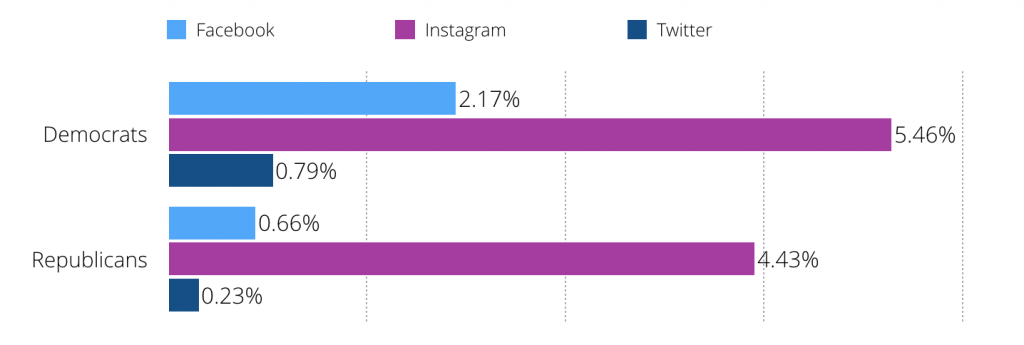
Top ten senators by total followers as of March 1, 2017
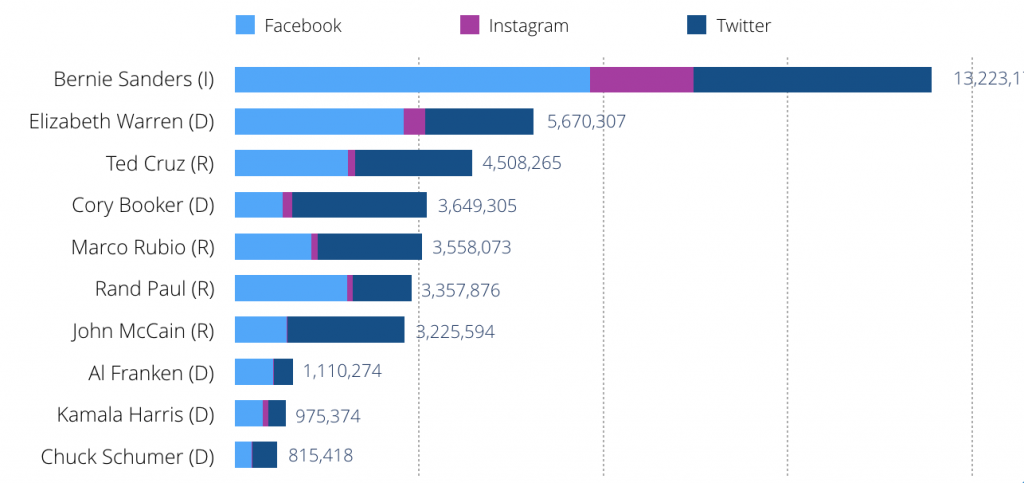
Top ten senators based on average engagement rate per post across all channels
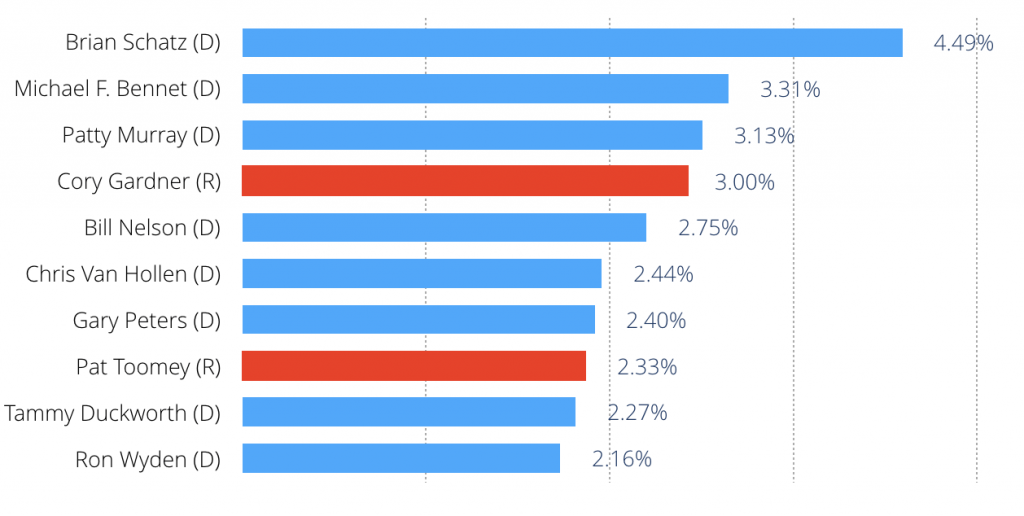
Key observations from cross-channel research:
- Democrats have more followers overall but also see far higher levels of engagement across all three channels.
- The ten senators with the biggest following don’t make it into the top ten based on engagement.
- The biggest gap in audience is on Instagram, where the Democrats’ Millennial support is helping them build a significant following.
Facebook Metrics and Analysis
Average Engagement Rate per Post Type
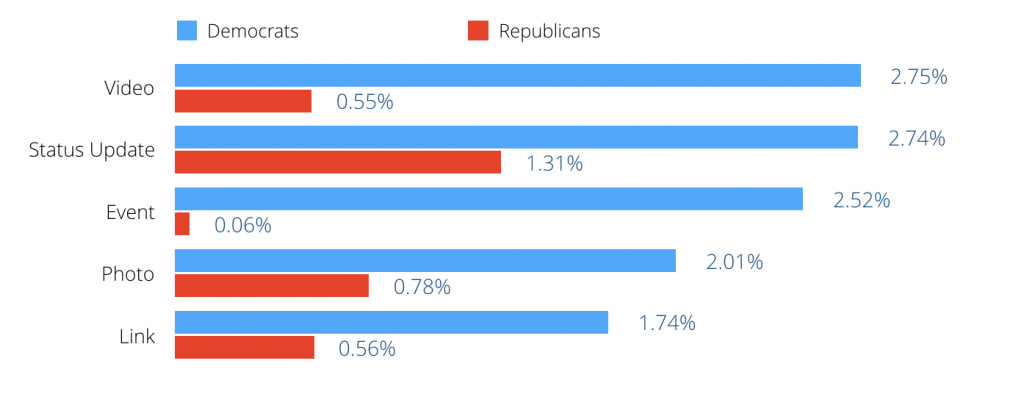
Key observations from Facebook research:
- Democrats overwhelmingly favor posting links, while Republicans post status updates 40% of the time.
- Status updates are far more engaging than videos for Republicans, while Democrats are making the most of Facebook’s native video platform to engage their audience.
- Democrats saw soaring engagement rates on events. Facebook served as an important medium in organizing protests, town halls and marches for Democrats.
Instagram Metrics and Analysis
Average Instagram Engagement by Day

Key observations from Instagram research:
- There is a glaring gap in engagement when it comes to video content: Republicans have an average engagement rate of 1.05% on video posts, while Democrats see 5.66% on average.
- Instagram is the channel where Republicans see engagement plummet the furthest on Saturdays.
- Democrats have a far larger Instagram audience, likely due to their Millennial-skewing base.
Twitter Metrics and Analysis
Top ten senators by total Twitter following as of March 1, 2017
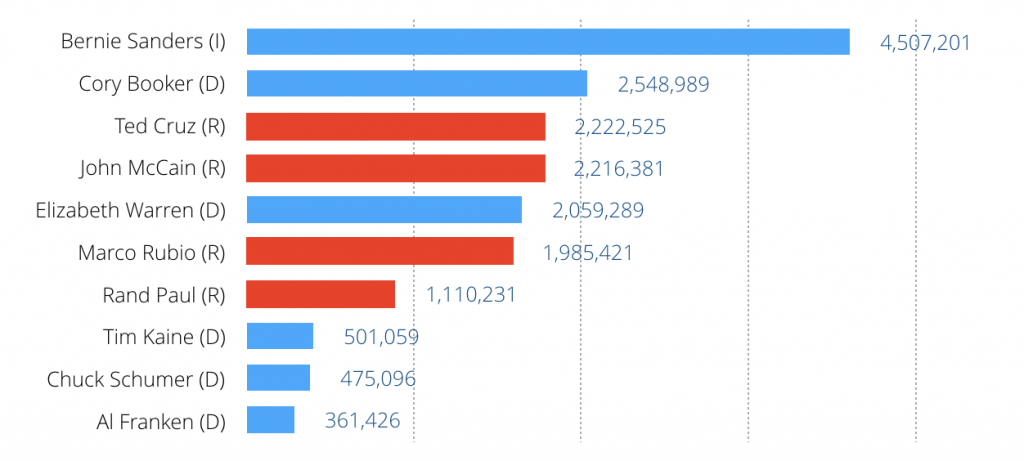
Top ten senators by average engagement per Twitter post
Key observations from Twitter research:
- While Republicans have a substantial Twitter audience, they fail to match Democrats when it comes to Twitter engagement.
- Senators from both parties post links more than any other type of medium, but links have the lowest engagement rate of any post type.
- The three top-performing Democratic Twitter posts have one thing in common: they all ask for Retweets to get the message out. With engagement rates ranging from 81.2% – 294% it’s clear that this approach is working.
Conclusions
Data doesn’t lie: on nearly every measure, Democrats are outperforming Republicans (except in the Electoral College). This is especially true when it comes to engagement metrics. We’ve developed some main findings for both sides of the aisle:
1. Audience does not equal engagement
On every platform, almost none of the top ten senators by audience make it into the top ten measured by engagement. This data goes to show that there’s a significant opportunity for politicians to focus on engaging their constituents rather than just acquiring followers.
2. Video is great – if you know how to do it
One of the most glaring differences we found in the data was the gap between Democrat and Republican Instagram video engagement (5.66% vs. 1.05%). This gap carries over to Twitter (1.05% vs. 0.28%) and Facebook (2.75% vs. 0.55%). Democrats are doing something right when it comes to native video – Republicans should take heed and invest in creating valuable video content.
3. Hashtags really do make a difference
Our data shows that by using the right hashtags, engagement rates can soar from a baseline average of 0.78% to 6.46% (#LetLizSpeak). Senators should be using data to determine which hashtags are truly engaging with their audience and quickly responding to the with relevant content.
Our Methodology
We use Rival IQ to analyze 31,200 social media posts of all Democratic and Republican senators for a three month period between December 2016 – February 2017.
We gathered data across Facebook, Twitter, and Instagram as well as cross-channel metrics.
Engagement is defined as measurable interaction on social media posts, including likes, comments, favorites, retweets, shares, and reactions. Engagement rate is calculated based on all these interactions divided by total follower count.
We chose to analyze senators rather than House members and other prominent leaders (e.g. Barack Obama, Donald Trump, Cabinet members) to get a fair assessment of politicians elected to the same level of office.
Bernie Sanders, formally elected as an Independent, has been included as a Democrat because he caucuses with the Democrats, ran for the Democratic nomination and serves as part of the Democratic party leadership.

